Missa Mexicana
Notes by Andrew Lawrence-King
October 2002
Andrew Lawrence-King and the Harp Consort:
![]() Listen
Listen
![]() View music text and translation
View music text and translation
![]() Make your own pop-up table display
Make your own pop-up table display
The Hispanic Baroque knit together often-dizzying contrasts of its culture and faith into works of great beauty and vitality. This week on Saint Paul Sunday, Andrew Lawrence-King and the Harp Consort give us a vivid musical taste of that world in "Missa Mexicana," a program that juxtaposes an exuberant 17th-century Mass setting by Spanish-born composer Juan Gutiérrez de Padilla, chapel master of Mexico’s Puebla Cathedral, with the Latin-American and African folk dances that inspired it. It's a lively Baroque fusion of the Old World and the New.
Missa Mexicana
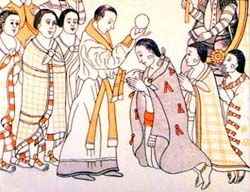
|
|
|
Spaniards serving communion to Mexicans, El Lienzo de Tlaxcala, 16th Century.
|
By 1645, Padilla's ensemble of singers, harpists, organists, bajonistas and violón-players comprised 28 men and 14 boys, the finest choir in all of Spain's foreign dominions. The Archbishop's magnificent library was founded in 1646, and the new cathedral was consecrated in 1649, its apse adorned with an exquisite 16th-century Andalucian wood-carving of the Virgin, and with García Ferrer's depictions of the Adoration of the Kings and of the Nativity, in which Archbishop Palafox himself is portrayed as one of the shepherds. Cristóbal de Villapando's later 17th-century decoration of the cupola shows the Virgin, the Holy Trinity and various characters from the Old and New Testaments, with an angel choir singing and playing instruments.
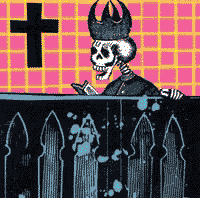
|
|
In the cathedral nave, enclosed with high screens in the Spanish manner, Padilla's mortal choir provided liturgical music for the conventional occasions: Latin masses, motets, vespers psalms, hymns, responsories, passions, lamentations, litanies, settings for Holy Week, Easter and Marian feasts. They also delighted the congregation with freshly written villancicos, set to the sensual rhythms of popular dances, and representing the vernacular speech-patterns of stock characters drawn from the many ethnic groups that populated Nueva España: haughty Portuguese, rugged Basques, bucolic peasants - the villanos, cheeky street urchins, indios mixing broken Spanish with their native Náhuatl tongue, exuberant black dancers from Guinea, Puerto Rico and Cuba.
The accepted idiom for church music was modelled on the Renaissance polyphony of the Spanish golden age, the siglo de oro. Just as Italian composers of Monteverdi's generation distinguished the prima prattica style of religious polyphony from the "new music" of the Baroque, so Padilla and his predecessor, Gaspar Fernandes, employed a deliberately old-fashioned musical language for their liturgical settings. The seconda prattica, the progressive style of early Italian opera, was an intellectual construct - an imitation of the expressive power of classical Greek drama, moving the audience's emotions with chromatic harmonies and angular melodic gestures in speech-like recitative. In contrast, the new music of New Spain was derived from popular culture -swaying listeners' hearts by moving their feet to the persuasive rhythms of sensual dances. In Hispanic theatrical music, the use of specific dance-melodies colours the mood of each scene - an aural equivalent to stage scenery. Similarly in church: each dance lends a particular character and defining rhythmic energy to its villancico, as well as entertaining the congregation with a popular tune that everyone would know.
Padilla's duties required him to teach polyphony but also to compose new chanzonetas each year for such major feasts as Christmas or Epiphany (the feast of the Three Kings). Many texts draw attention to this love of novelty - "listen to the nice new xácara," "novelty of novelties," "novel comic interludes" - but Spanish culture was also fascinated with the aesthetic of the contrafactum, the art of creating new pieces based on existing masterpieces. Just as the great cathedrals were constructed over many years, and by several generations of craftsmen, so musical works were built on a foundation of earlier material.
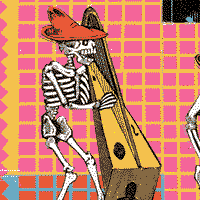
|
|
Thus we see a fondness for theme-and-variation forms, for repeated refrains, for adding new contrapuntal voices to existing polyphony, and for endless literary and musical cross-references. Padilla's A la xácara xacarilla is structured as a poetic medley, citing the opening lines of one or more well-known romances in each stanza, whilst each singer has a different melody to sing over a repeating ground bass, that bass itself a sequence of xácara variants.
Padilla, whose Mass "Ego flos campi" forms the centre-piece of this programme, was born in the Andalucian city of Málaga, and was maestro de capilla in Jerez and Cádiz, before travelling to Puebla to take up the post of cantor and assistant to Fernandes. He taught singing and violón-playing, and also managed an instrument-making workshop, selling bajónes (bass dulcians) and chirimías (shawms) across the whole country. The conservative, formal style was regarded as a reflection of the ancient splendour and solemnity of the holy Mass, but Padilla brings the old forms to life with driving rhythms and sparkling syncopations. Just as the composer himself left Spain to make his home in the New World, his musical style was grounded in the traditions of the siglo de oro and then nurtured by the colours and rhythms of Central America.
Ego flos campi is a so-called "parody mass" - the polyphony is created by myriad re-workings of material from an extant motet. In this case, the original motet has not survived, but Padilla's techniques can be observed in other parody masses he wrote, based on his own motets. Certain memorable melodic phrases and harmonic sequences recur as motives, especially at the beginning and end of each movement, but often with the counterpoint inverted or subtly transformed. Sometimes the voices combine in genuine eight-part writing; more often they are separated into two antiphonal choirs, exchanging short phrases in catchy speech-rhythms. In Ego flos campi, Padilla takes considerable liberties with the liturgical text, creating refrains that suggest the religious fervour of a gospel meeting and hint at the didactic, evangelising purpose of music in the colonial church: "Goodwill to all men!"…"Have mercy upon us!"…"I believe!"…"I acknowledge!"…"Lord God of Hosts!"
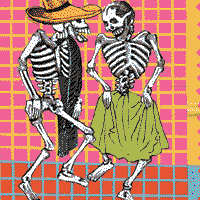
|
|
Even in this formal style, Padilla's music breathes the spirit of the dance, and details of individual dance types are preserved in collections for guitar or harp by such composers as Santiago de Murcia and Lucas Ruiz de Ribayaz. Most of these books begin with the most famous of these dances, the xácara, sung in the dialect of the back streets of Madrid and traditionally accompanied by an ensemble of guitarists dressed in black Spanish cloaks, with daggers hidden in their sleeves. This 17th-century street music became fashionable even in high society, as Spanish composers used the vivid rhythms and dance energy of the xácara to drive forward the plots of operas and to introduce theatrical excitement even into church music. Indeed, in Christmas villancicos by Padilla, by his successor as maestro, Juan García de Zéspedes, and by Francisco de Vidales (principal organist), the text draws the listeners' attention to the secular origins of the music: "On with the xácara!" "A jaunty style and voice are always needed…" "Dance the canario and the villano..." "Celebrate with the guaracha..." "with the gaucambe..."
The attitude of the church authorities to villancicos in the guise of a xácara, negrilla, marizápalos or guaracha was at best ambivalent. The xácara and similar dances were repeatedly (and thus, one presumes, ineffectually) condemned as excessively arousing, yet Pedro Cerone, author of the famous 17th-century treatise El Melopeo y Maestro, defended the villancicos, which he compared to the mascherate sung at Italian carnivals: "One hears now a Portuguese, now a Basque; once an Italian and once a German; first a gypsy, then a black man… I would not like to say villancicos are bad thing, for they are received in all Spanish churches, and were it not for them, it would not be possible to reach the appropriate heights of solemn celebration… There are some people so lacking in piety that they attend church but once a year, and miss all the Masses of Obligation, because they are too lazy to get up out of bed. But let it be known that there will be villancicos, and there is no one more devout in the whole place, none more vigilant than these people, for there is no church, oratory or shrine that they will not visit, nor do they mind getting up in the middle of the night in the freezing cold, just to hear them." [A.L-K.]
The xácara was normally in D minor, with a simple alternation of tonic and dominant harmonies, triple and hemiola rhythm, but a major-mode variant was known as the jácaras de la costa, perhaps originally associated with the Veracruz region, where local traditions have preserved to the present day many features of 17th-century instruments and their playing styles. The secular text for the marizápalos appears at first glance to be an innocent pastoral ballad, but every line contains a double entendre, revealing a subtext of high-flown eroticism, an almost spiritual celebration of the act of love. Nevertheless, even this romance could be adapted a lo divino to create "a faithful metaphor" in seraphic harmonies.
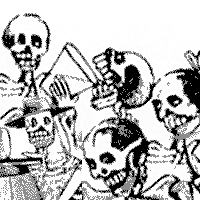
|
|
The cumbées is one of several African-inspired dances, linked to the zarambeques, guacambe, paracumbe, to the Afro-Cuban guaracha and to the Afro-Hispanic patois of the negrilla. The solo variations - diferencias - come from a Mexican guitar manuscript, recently identified as the lost book of dance-music by Santiago de Murcia: the African dance titles provide scat syllables for the improvising singers. Other dances, such as the corrente, were of Italian origin, but given a distinctively Spanish flavour by means of a syncopated triple rhythm with the accent on the second beat of the bar. This characteristic rhythm creates the swing and atmosphere - the aire - of 17th-century Hispanic music, a quality that English contemporaries called the "Spanish humour."
Just as musicians played diferencias over the repeated harmonic sequence of the xácara and other ground basses, so dancers would improvise choreographic variations - mudanzas - on the basic steps of each dance. Vocal music too was often in the form of verses (coplas) and chorus (estribillo), avoiding the bipolar contrasts of the Italian da capo aria in favour of ballad-style narration or meditative contemplation. Jerónimo Nadal's highly successful book of New Testament engravings Adnotationes et meditationes, first published in 1595, shows a tableau identifying precisely those key elements of the Christmas story that are celebrated in the villancicos: the city of Bethlehem, the Babe and the Virgin with the ox and ass in lowly attendance, the humble stable door that is also the gateway of heaven, the angel choir singing to the shepherds, the star guiding the three kings.
Certain poetic conceits can also be found in many villancicos: the contrast between the icy winter outside the stable and the fire of divine love within, the Babe who cries whilst the world rejoices, revellers singing rousing choruses as the baby sleeps, metaphors of flowers and stars. Two suns chase away the darkness, one in the heavens, the other the resplendent light of the new-born Babe. God is the judge, the godfather, the divine giant; the Christ-child is the lover, the hero, the flower amongst thorns; Mary is the beloved, the dawn, the pearl of pearls, the flower of flowers. Such elegantly poetic titles can be found even in a raunchy xácara, or alongside the simple names of humble street entertainers: Antón with his tambourine, Gila dancing to the bagpipe-playing of Antón Pascual, Miguel dressed as a parrot, or Antonio in a monkey-suit.
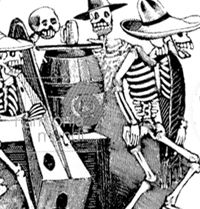
|
|
In all kinds of Hispanic music, from street xácaras to court operas and elegant chamber music, the guitar was seen as the characteristic instrument of the new, baroque style. Ribayaz explained technicalities of harp-playing in terms of guitar chords; an 18th-century tutor for the castanets classifies rhythmic patterns in relation to the up- and down-strum of the guitar; a quartet of guitars - each one a different size and pitch - formed a consort that was, together with the Spanish harp, considered an indispensable element of the rhythm and mood of the aire español. A set of six matched Veracruz baroque guitars was specially constructed by Tacho and Wendy Utrera for this project, under the supervision of Eloy Cruz in Mexico City and according to the consort principles first established by The Harp Consort's guiding guitar guru, Pat O'Brien.
Harp and guitars combine with bass viol, lira and organ in the high style; with bajón, shawms and sackbut in large-scale choruses; and in dance music with all kinds of traditional instruments: tambourines, large African drums, woodblocks, shakers, the simple box-drum played by itinerant musicians throughout Latin America, small bells, rain stick, psaltery and even - in the jácaras de la costa - a conch shell.
This programme is a musical exploration, not a liturgical reconstruction, bringing together dance-like religious settings with their original bailes, the actual dances that inspired them. The authenticity is not only musical, but cultural, revelling in the complex cross-currents of conservatism and experiment, of naïveté and sophistication, high and low art, intellectualism and sensuality, that characterise the Hispanic baroque. For whilst the 17th-century congregation and the clergy of Puebla Cathedral listened to Padilla's Mass interspersed with festive villancicos, they would have been inescapably reminded of the raw origins of the xácara dance.
|
For information about Missa Mexicana or the The Harp Consort recordings visit Public Radio Musicsource.
|








